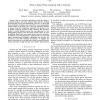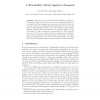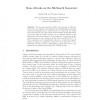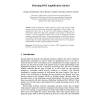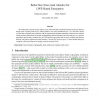176 search results - page 10 / 36 » Distinguishing Attacks on T-Functions |
GLOBECOM
2009
IEEE
14 years 2 months ago
2009
IEEE
—802.11 localization algorithms provide the ability to accurately position and track wireless clients thereby enabling location-based services and applications. However, we show ...
FC
2010
Springer
13 years 11 months ago
2010
Springer
Since 2004, many nations have started issuing “e-passports” containing an RFID tag that, when powered, broadcasts information. It is claimed that these passports are more secur...
FSE
2005
Springer
14 years 1 months ago
2005
Springer
The bit-search generator (BSG) was proposed in 2004 and can be seen as a variant of the shrinking and self-shrinking generators. It has the advantage that it works at rate 1/3 usin...
CRITIS
2007
13 years 9 months ago
2007
DNS amplification attacks massively exploit open recursive DNS servers mainly for performing bandwidth consumption DDoS attacks. The amplification effect lies in the fact that DNS ...
CTRSA
2011
Springer
12 years 11 months ago
2011
Springer
We analyze the concrete security and key sizes of theoretically sound lattice-based encryption schemes based on the “learning with errors” (LWE) problem. Our main contribution...
